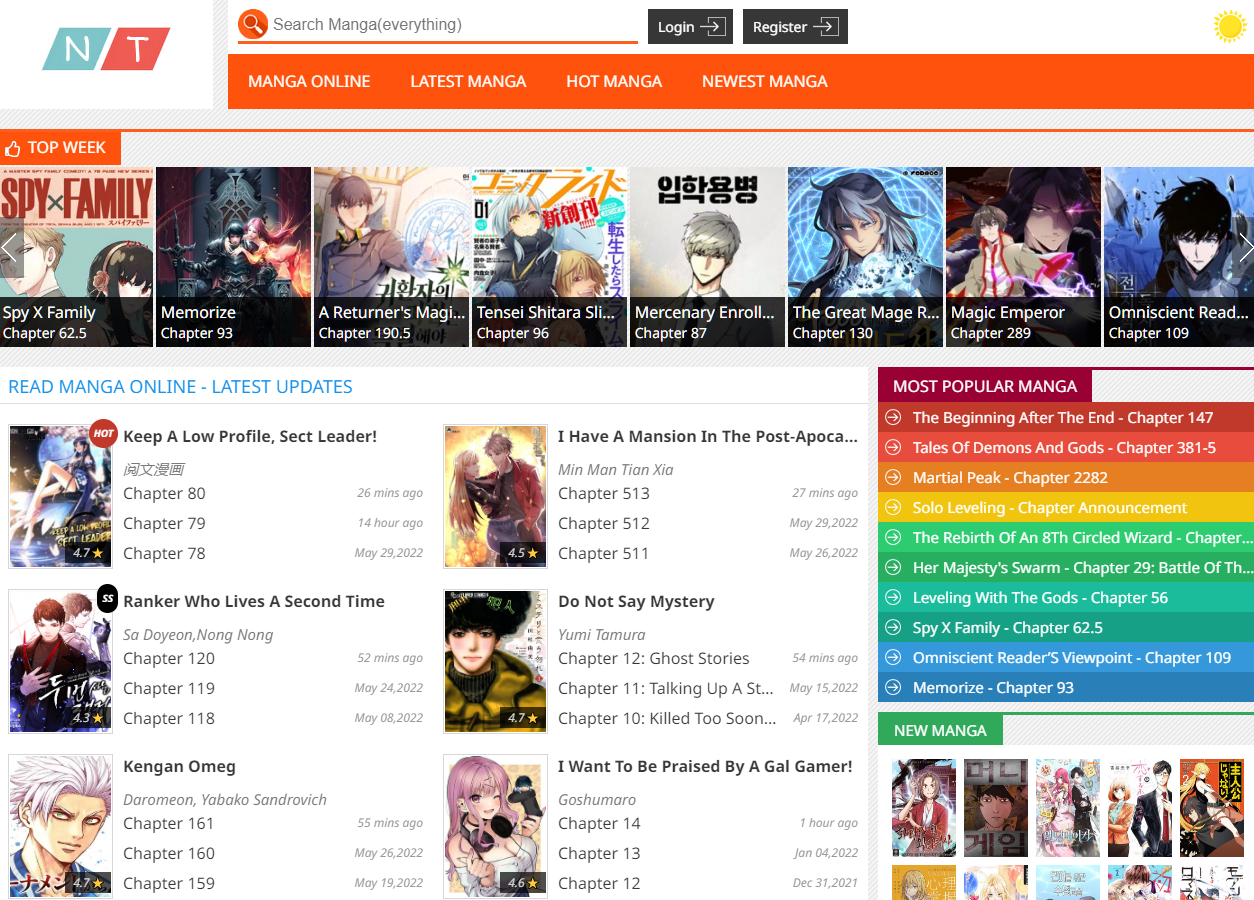I Hate You
₫6.825.102
Manganelo: Your Daily Source for Popular Manga Titles
Product description
The Role of Antagonists in Shaping Conflict
Antagonists in Tokyo Underground are not merely obstacles; they are integral to developing the protagonist and advancing the plot.
This inner turmoil resonates with anyone who has faced challenging decisions and mirrors common human experiences, deepening the reader's connection with the character.
This thematic richness elevates the manga from mere entertainment to a thought-provoking commentary on society, making it relatable to a broader audience, even beyond typical manga fans.
Issues such as alienation, systemic corruption, and the struggle for identity resonate universally, prompting discussions among readers about their realities. The series serves as a mirror reflecting real-world dilemmas, encouraging fans to critically analyze their surroundings and consider the implications of their choices.
As various creators experiment with blending genres and pushing boundaries, Tokyo Underground remains a touchstone for those aiming to craft multifaceted narratives.
The protagonist is typically portrayed as a conflicted individual striving to understand their place amid chaos, while supporting characters add depth and varying perspectives through their own struggles and growth.
Character Dynamics and Relationships in Tokyo Underground
Understanding character dynamics in Tokyo Underground enhances the overall experience of the story. The interplay between characters creates tension, builds emotional stakes, and drives narrative arcs.
Many creators have drawn inspiration from its themes of survival and self-discovery, leading to innovative new titles that echo similar motifs. The series encourages aspiring artists and writers to explore complex emotional landscapes, ultimately enriching the diversity of manga as a whole.
As readers traverse the dimly lit pathways and hidden recesses, they encounter a society that exists far removed from the bustling life above. This contrast heightens the stakes for the characters, who must navigate both their personal conflicts and the threats arising from the underground's criminal elements.
The series has contributed to the expanding landscape of global manga fandom, encouraging diverse interpretations and analyses while fostering connections that transcend geographical boundaries.
Its unique blend of artistry and storytelling has attracted varied audiences, bridging gaps between different demographic groups. Fans find themselves united under shared love for the series, leading to community-building and collaboration in fan art, discussions, and cosplay.
Themes That Resonate Beyond the Page
Tokyo Underground does not shy away from addressing profound themes, inviting readers to reflect on real-world issues.
Struggling between ambition and morality, the protagonist frequently finds themselves at odds with their principles. As they delve deeper into the underground, they must confront their fears and desires, often leading to critical choices that define their path. Readers witness a transformative arc where growth is achieved through adversity, making the protagonist relatable and compelling.
Key themes include isolation, as many characters feel disconnected from the world above; power dynamics play a crucial role, highlighting corruption and moral ambiguity. The exploration of friendship and alliances in such a hostile environment showcases the human spirit's resilience.
Dive Deep into the Gripping World of Manga Summary Tokyo Underground - An Engaging Overview
In the vibrant world of manga, there are numerous series that capture the imagination and thrill of readers. Among these, the Manga summary Tokyo Underground stands out as an intricate tapestry of action, adventure, and emotion. Delving into this unique narrative allows fans and newcomers alike to appreciate the depth and intricacies woven into the story's fabric. This article explores the key plot points, character arcs, and thematic elements that make Tokyo Underground a compelling read.
Visual Storytelling Techniques
Art plays a crucial role in conveying tone and enhancing the emotional impact of the narrative.
Through well-crafted antagonists, the narrative invites readers to explore moral ambiguities, leaving them questioning what makes someone a true "villain."
Soundtrack and Atmosphere
While manga is inherently a visual medium, the atmosphere created by sound plays a significant role in shaping the reading experience.
From detailed backgrounds showcasing the gritty nature of the underground to expressive character designs that communicate feelings without words, the visual storytelling is immersive. The artist employs innovative panel layouts and dynamic angles that draw readers into the action, creating a sense of urgency and excitement.
Titles that explore underworld settings, existential themes, and character-driven narratives can provide readers with comparable experiences, helping them discover new favorites.
Broader Cultural Reflections
Through its exploration of societal themes, Tokyo Underground engages with cultural dialogues relevant to contemporary audiences.
For instance, certain characters might be adorned with elements that represent their backgrounds, aspirations, or psychological states. These visual cues offer insights into their personalities and motives, allowing readers to engage with the story on multiple levels.
Main Characters Who Define the Journey
Central to the narrative are characters who embody the struggles and triumphs of those living in Tokyo's shadows.
Additionally, supporting characters bring different perspectives and experiences, creating a rich tapestry that reflects the diverse societal issues within the underground such as loyalty, betrayal, and survival. Their relationships are multi-dimensional, making readers emotionally invested in their journeys.
The Evolution of Manga Fandom
Tokyo Underground has played a significant role in shaping manga fandom.
This interplay between visual art and imagined sound offers a unique approach to storytelling, pushing the boundaries of traditional manga and inviting fans to engage more fully with the material.
Dynamic paneling and expressively designed characters capture the emotional essence of scenes, while detailed backgrounds immerse readers in the underground world.
The protagonist, for instance, often grapples with their identity and motivations while dealing with external pressures from rivals or authorities seeking to maintain control over the underground. Each character contributes uniquely to the development of the plot and adds layers of complexity to the overall narrative.
Moreover, the underground serves as a metaphor for exploring deeper human emotions — fear, loneliness, and longing, contrasting sharply with the bright surface of society. This duality fuels the narrative’s intensity and appeals to readers craving more than a simple adventure story.
It successfully blends elements of traditional manga with innovative approaches, drawing parallels to real-world issues that resonate with a broad audience.
How does the artwork contribute to the story?
The artwork in Tokyo Underground significantly enhances the narrative by utilizing visual storytelling techniques.
Protagonist's Internal Struggles
The journey of the protagonist unfolds against a backdrop of internal conflict.
Read Full: Hakoiri Musume Desu Ga, Keiyaku Renai Hajimemashita
The series delves into how individuals navigate their existence in a perilous environment, exploring the emotional struggles that accompany such trials.
Inspiration for Future Creators
The success of Tokyo Underground illustrates the potential of combining rich narratives with character-driven storytelling.
This cultural engagement elevates Tokyo Underground beyond entertainment, establishing it as a valuable piece of literature that fosters awareness and dialogue.
Artistry and Style: What Makes Tokyo Underground Unique
In addition to its captivating storylines, Tokyo Underground features a distinctive artistic style that sets it apart from other manga series.
Character Design and Symbolism
Character design in Tokyo Underground goes beyond aesthetics; it carries symbolic weight.
Conclusion
Tokyo Underground exemplifies the captivating potential of manga, weaving together thought-provoking themes, intricate character dynamics, and stunning artistry. As we explored its setting, characters, and the impact it has had on the genre, it becomes clear why this series holds a special place in the hearts of many. For readers seeking an engaging escape into a richly constructed world, Tokyo Underground promises an unforgettable journey that lingers long after the last page is turned.
FAQs About Manga Summary Tokyo Underground
What is the main theme of Tokyo Underground?
The primary themes of Tokyo Underground revolve around survival, identity, and the complexities of human relationships.
Exploring the Underbelly of Tokyo
The underground city of Tokyo is a labyrinthine network filled with danger and mystery.
Can I find similar manga to Tokyo Underground?
Yes, numerous manga share thematic or stylistic similarities with Tokyo Underground.
An Overview of Tokyo Underground's Setting and Premise
The setting of Tokyo Underground is crucial to understanding its characters and plots. The underground world beneath Tokyo serves not just as a backdrop but plays a vital role in shaping the stories and interactions of the characters.
The Impact of Tokyo Underground on the Manga Genre
Tokyo Underground has left indelible marks on the manga landscape, influencing subsequent works and expanding genre conventions.
By presenting formidable challenges, these characters force protagonists to confront their weaknesses and push boundaries. Furthermore, the motivations behind villainous actions often reveal deeper societal critiques, adding layers to their personalities rather than painting them as one-dimensional evildoers.
Who are the central characters in Tokyo Underground?
The main characters consist of a diverse cast who each navigate the harsh realities of the underground world.
Trust becomes a scarce commodity as characters navigate a treacherous world filled with deception. Friendships that initially seem solid may fracture under pressure, revealing the fragility of alliances in high-stakes environments.
Furthermore, the evolution of character designs throughout the series mirrors their journeys, providing additional context for their growth and development. This attention to detail emphasizes the careful craftsmanship that fuels the series' appeal.
Fans often find themselves imagining soundscapes — the bustling noise of the surface world contrasted with the eerie silence of the underground. By pairing the manga with a curated soundtrack, readers can immerse themselves further into the emotional layers of each scene, enhancing the overall narrative impact.
Relationships Built on Trust and Betrayal
One of the most fascinating aspects of Tokyo Underground is how relationships evolve throughout the story.
Why is Tokyo Underground considered unique in the manga genre?
Tokyo Underground is regarded as unique due to its combination of engaging storytelling, complex character relationships, and striking artistic style.







